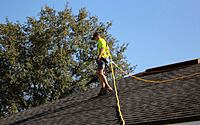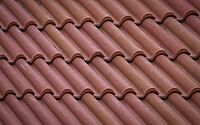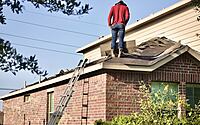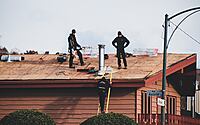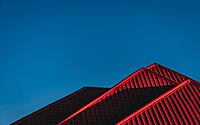How To Secure Your Roof With These Easy Steps
Do you want to make sure that your roof is secure, but don’t know where to start? Roofing can be a daunting task but it doesn’t have to be! With the right knowledge and effort, you can easily take steps toward making your home safer and more durable. In this blog post, we’ll walk you through some of the best ways to secure your roof so that you never have to worry about potential damage or leaks again. From inspecting any existing wear and tear, improving ventilation with vents and insulation, addressing any repairs quickly, and giving it an additional layer of protection – these simple strategies will ensure that every part of your home’s exterior is safe from harm’s way. So let’s get started!
Inspect Your Roof Bi-Annually to Spot Any Damage or Wear and Tear
It may sound tedious, but one of the simplest and most effective ways to maintain the integrity of your roof is to conduct a quick checkup twice a year—ideally in spring and fall. This inspection should be thorough, not glancing, and should involve taking notes about anything that looks worn down or damaged, as repair will become more expensive with the time. Make sure to look for signs of a leaky roof or any shingle damage. Think about it like an oil change for your car or an annual physical—a little up-front maintenance can save you big bucks in the long run. Taking some extra time now can prevent major headaches and unnecessary costs (and stress) later.
Clean Out Debris in the Gutters and Downspouts
After a winter of intense weather, it’s time to check the gutters and downspouts around your home. Cleaning out any debris that accumulated will help ensure good drainage during times of heavy rain. Granted, it’s not the most fun task, but what are a few minutes of hard work now compared to a potentially costly repair in the future? Not only is it important for your home’s safety, but is equally important to make sure stormwater is draining away properly and avoiding flood damage. So make sure you take the time to take care of your gutters and downspouts—your home will thank you!
Investigate Any Potential Weak Points on the Roof, Such as Vent Pipes or Chimneys
Of all the aspects of home maintenance that can often be overlooked, one of the more important is evaluating your roof. It’s essential to take regular steps to maintain a strong, sound roof – after all, it’s the key structure between our homes and the outside world. That’s why it’s important to investigate any potential weak points on the roof, such as around vent pipes or chimneys. These areas often need to be assessed in order to ensure secure seals, proper caulking, and weather-resistant shingles or other materials. And while you’re at it, consider how indoor comfort plays a role too—acoustic slat wall solutions can help reduce outside noise if your roof or walls lack sound insulation. A little attention goes a long way in extending the life of your roof and keeping you safe in all types of weather.
Apply Protective Coating To Help Guard Against Unexpected Damage
Applying a protective coating is an easy and effective way to give your possessions a layer of protection against unexpected damage. Whether it’s that favorite item of furniture in the living room, your car’s exterior, or your most beloved electronics; you can take precautions to prevent them from the wear and tear that comes with daily use over time. And when we say ‘easy’, we mean it—the application process really consists of just spraying on a spray-on wrap or film product and following the directions provided by the manufacturer. Then you can sit back and relax knowing that you’ve armed yourself with one extra layer of protection against unknowable damages. we definitely recommend giving this trick a try!
Above all, make sure that roof maintenance is always a priority. We can’t emphasize this enough: inspecting, cleaning, and coating your roof when needed should be taken seriously. After all, if left alone and unmaintained, the roof may develop issues that cause costly repair or replacement down the line. Therefore, checking your roof on a biannual basis is highly recommended. Furthermore, you should take into account any potential weak points and worksites to ensure they’re in proper condition. Finally, applying protective coatings whenever necessary helps protect against possible untimely harm or damage– it’s a cost-efficient way of preventing an unexpected expense in the future.
- by Matt Watts

